Published Mar 20, 2013
One Trek Mind: Inventors
One Trek Mind: Inventors
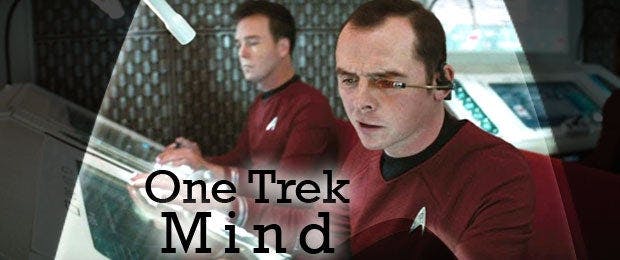
Even today, with all of our technological advancements (for all you know, I am typing this by using Google Glass and blinking a lot), you can turn on some of the earliest episodes of Star Trek and marvel at the cool gadgets and gizmos. Well, maybe not Captain Pike's “one-beep-for-yes” chair, but the big idea stuff like warp drive and the transporter.For a show that has inspired generations of innovators, it's been good to see that the writers and producers have always respected this part of its core audience. To that end we've whipped out our slide rules and fastened our pocket protectors and offer up (in no specific scientific order) our 10 favorite Star Trek

easure of a Man” or maybe even TOS's “The Devil in the Dark,” but it doesn't quite gel. The Tyran inventor, Dr. Farallon, however, is still cool. In addition to creating the particle fountain (a bold step forward in mining), she created the Exocomps to do cleanup on the fountain and its systems. The basic gist is that these little robo-buggers called are actually alive (and don't want to go in the nasty tubes and meet their death.) Somehow Exocomps evolved and, after a little shaking from Data and the rest of the crew, Dr. Farallon was able to put aside her results-oriented demeanor, respect the development in her creations and stop exploiting them.
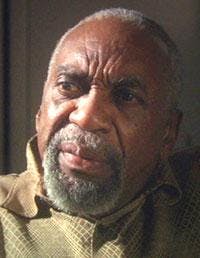
Emory EricksonAmong the better aspects of the “early, rugged” spacefaring years depicted in Enterprise is its treatment of the transporter. They use it… but they don't really like to. At least not on themselves.The creator of the transporter was one Emory Erickson, a big-hearted scientist who let his ambition ruin his life. Not being content with his invention, he tried to create a sub-quantum transporter – a transporter with no range limit – but tests on this device left him paralyzed and got his son irrevocably trapped in subspace. What's worse is that he knew the science was flawed, but ignored that to continue with the experiments.But… let's ignore that second half of his career and focus on the first part. Dude invented the transporter. And for that we have http://www.startrek.com/article/one-trek-mind-19-top-10-transporter-moments AND a lot to be thankful for.
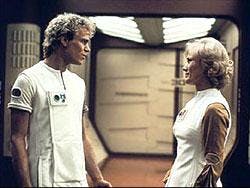
Carol and David Marcus
This mother and son team spearheaded Project Genesis, a system of terraforming that could take an entire planet and basically hit “restart,” creating life in an instant. The Marcuses were still in the middle of their research (having only tested it out in a small, underground cavern setting) before the Genesis Device was stolen by Khan Noonien Singh. (The power over all of life and death came in a big glowing tube, naturally.)Carol Marcus was a dedicated scientist, one who wouldn't let a relationship with someone like Jim Kirk sideline her career. David, however, had a bit of his father's cowboy streak in him, perhaps manifested in his use of protomatter in the Genesis Matrix. Use of this protomatter ultimately led to the Genesis Planet's destruction; however, it is unknown if its use aided in regenerating Spock.
Zefram Cochrane
Were it not for Zefram Cochrane, all of the “boldly going” in Star Trek may never have happened.The inventor of warp drive changed Earth's isolated status out there in the System of Sol (“mostly harmless,” as another science fiction franchise would have it) and put it in the center of the galaxy. By achieving faster-than-light travel, Earth (and later the United Federation of Planets) was able to explore, engage with and, in many cases, improve the larger Universe. All the noble intentions wouldn't add up to anything without the means to do it.
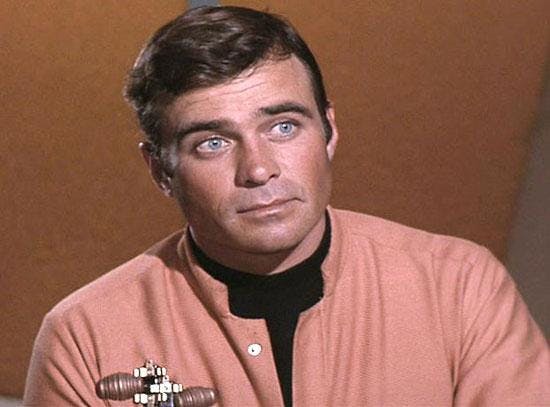
We first meet Cochrane (of Alpha Centauri, as Kirk calls him) in the TOS episode “Metamorphosis,” where he is the kept man of an all-powerful cloud of sparkly energy. (Hey, it beats workin'!) Cochrane is seen as a kind individual – indeed, he gives up his freedom to stay with his vapor girlfriend – but levelheaded enough to recognize a threat. (In other words, don't bite the amorphous hand that feeds you with too many questions from the universal translator.)
The OTHER Zefram Cochrane
If you are so in love with canon you take an hour to explain why TOS Klingons had smooth foreheads (quick answer: budget) you no doubt know all the talking points to explain the difference between the “Metamorphosis” Cochrane and the Star Trek: First ContactCochrane. But let's be frank: they're two different guys.
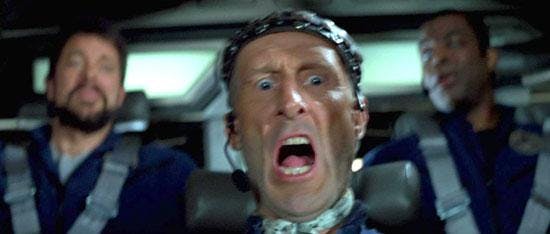
The Cochrane in the 1996 film was much more fun (cue the “Ooby Dooby!”), but he wasn't exactly the most responsible man. It is implied that, were it not for the interference and aid of the Enterprise-D, the Phoenix's first warp flight may never have happened. (This is open to debate – if the Enterprise-D weren't in the area, the Borg would have never damaged the ship, and the flight would have gone on as planned... or would it have?)In any time stream, however, Cochrane is a genius. In this one, his motives (money and fame, mostly) may not have been as lofty as science and exploration, but by the time he appeared in Enterprise he seemed much more dignified.
Richard Daystrom
Did Dr. Daystrom's M-5 Multitronic Unit have the blood of the USS Excalibur's crew members on its mechanized hands? Yes, surely it did, but that doesn't mean Daystrom's breakthroughs in duotronic technology were any less genius.
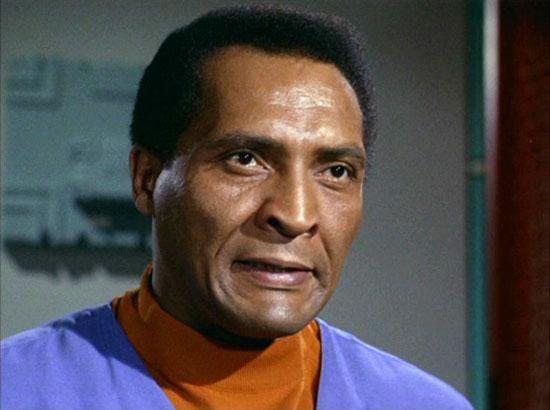
The winner of the Nobel and Zee-Magnees Prizes, Dr. Daystrom's visionary as an inventor is perhaps best represented in his most lasting legacy: the Daystrom Research Institute, arguably the most august place of learning in the Federation after the Vulcan Science Academy. It is yet another example of the Federation's evolved way of thinking that Daystrom, who later proved to have severe psychological problems (indeed – his engrams on the M-5 may have led to some of the fallout of “The Ultimate Computer”) could still be honored for his achievements.
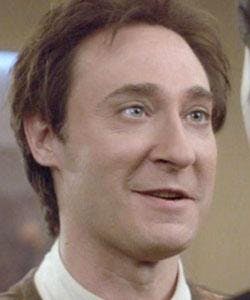
Noonien Soong
Is there an inventor in Star Trek more hotly discussed and puzzled over than Dr. Noonien Soong? The great-grandson of the geneticist (and inadvertent Klingon forehead smoothener) Arik Soong is a mystery of a man whose methods have never quite been figured out. His killer app, however, can't be denied – the positronic brain and neural net found in Soong-type androids, specifically Data, Lore and B-4, which changed the galaxy forever. If “The Measure of a Man” is to be believed, Dr. Soong created artificial, yet sentient life.Even though the Crystalline Entity destroyed his secret laboratories on Omicron Theta, Dr. Soong continued making upgrade chips (he kept tabs on Data) and worked on a way to cheat death in his spare time. He was able to insert the memories of his dying wife Juliana into an android (which, as I'm sure you can imagine, doesn't really go as planned.)Pretty much anytime you ever hear someone mention the name Dr. Soong it is done so with a mix of reverence and fear. It's almost as if his willingness to break any ethical barrier in the pursuit of science is something others dare not contemplate.
Data
Lt. Commander Data is, in many ways, a chip off the ol' block.
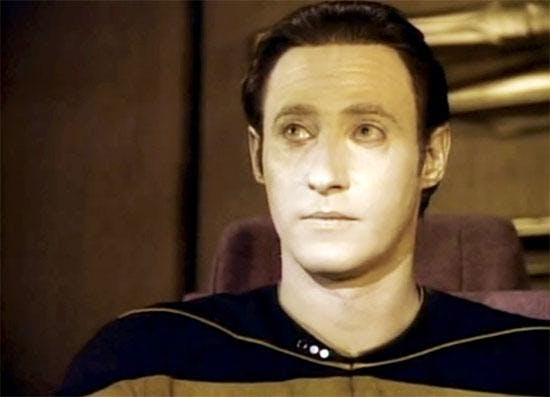
Most of the time Data spent his off hours painting or playing classical music, but sometimes his need to create had larger implications. Using his own prositronic brain as a template, he created a new one with the aid of a submicron matrix transfer. Without need of a mate, Data begat a daughter.Her name was Lal (Hindi for “beloved”) and her creation, as is frequently the case in such episodes, caused some ethical dilemmas for Starfleet. Alas, Lal was not long for this world, as imperfections in her neural net eventually caused her to shut down. Ironically, the first symptom of this problem was her ability to feel emotion, something Data himself struggled with for years prior to the discovery of his emotion chip.
Lt. Montgomery Scott
Scotty was no doubt the type of guy who invented things all day long but just kept them to himself. I mean, did he ever patent the way of padding the estimated time it would take to fix something?
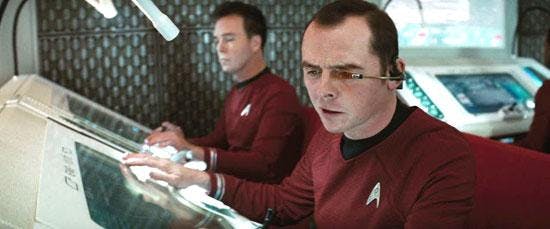
In Star Trek (2009), however, Spock Prime comes to the new timeline to point the young Scotty in the direction of his eventual discovery – the calculations for transwarp beaming. “It never occurred to me to think of space as the thing that's moving” he sighs. The question is, if he didn't think of it, who did? (Not Keenser – definitely not Keenser.)
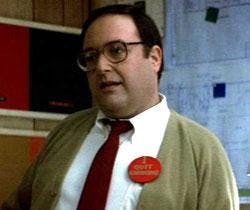
Dr. Marcus Nichols
If Scotty's “discovery” of transwarp beaming feels familiar (and maybe even a little unfair to the great engineer) then it's a case of what goes around comes around. In Star Trek IV: The Voyage Home Scotty pulls the same trick Spock does when he realizes he needs some transparent aluminum.
The San Francisco-based plant manager at Plexicorp may have had the formula of transparent aluminum handed to him by a space traveler from the future, but he was no dummy. He was quick to realize its potential and to brush off any annoying phone calls while looking at the specs. Why he didn't also inquire about voice activated computer prompts when he had the chance is anyone's guess.
So there's my ten. Man, I feel like a total slacker. All I've managed to do today is make coffee. Not only that, I'm sure I left off one of your favorites. Was it Geordi La Forge's holodeck sweetheart Leah Brahms? Or Matt Frewer's visitor from the past (in a future ship), Berlinghoff Rasmussen? Or maybe whomever it was that created the Ktarian Game? Let me know in the comments below.
_______________________________
Jordan Hoffman is a writer, critic and lapsed filmmaker living in New York City. His work can also be seen on Film.com, ScreenCrush and Badass Digest. On his BLOG, Jordan has reviewed all 727 Trek episodes and films, most of the comics and some of the novels.
